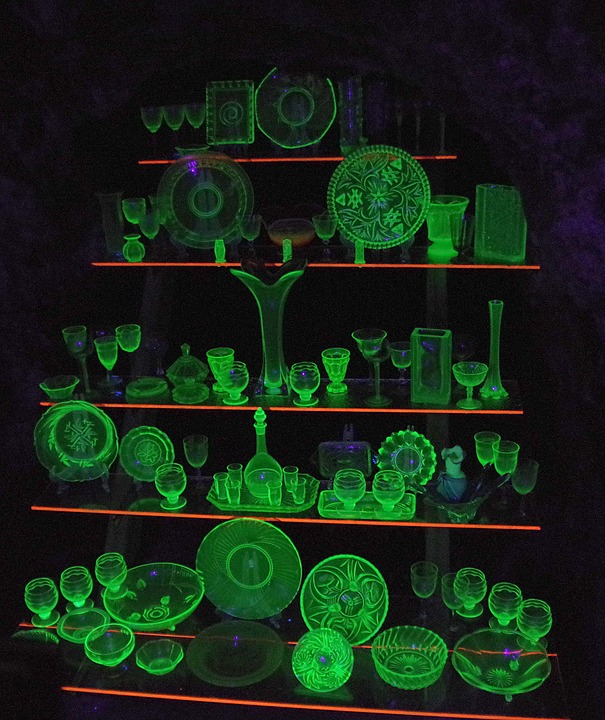I have been reading many articles and watching about teleworking for a few years. In many branches, this is the most significant trend. For example, many programmers, other IT specialists or any freelancers can merge work and travel around the world.
You can see a video in YouTube, such an example polish guy makes films about his experiences in foreign countries, often exotics like Bolwia - "programista na wakacjach".
They need only a computer and short fast Internet.
Personally, I sometimes work at home. However, I cannot entirely focus on my tasks. I often check my fridge or read funny articles on the web. I am completely nonproductive. Eating breakfast at noon or spending all day wearing pyjamas. It is not normal ;)
On the other hand a few days ago I read an article about ethical practices in doing remote business. Do you know companies without any offices? I know Nozbe - It is the company in IT sector. They develop the application for tasks management.
Please watch the short video. https://www.youtube.com/watch?v=A6bnZ_nqO80.
What do you think about this idea? Can you work at home and other places outside your office?
Personally, I see a few advantages and good practices inspired by the #noOffice stream.
Firstly, I love asynchronous work. I prepare my daily tasks every morning, and I execute them during my working hours. I hate long meetings in corporations. I think that a quick overview via chat or a few minutes of discussion can generally resolve a lot of unnecessary conversations. They prepare tasks in our issues tracking. Nevermind if I solve this issue at night or during the day.
The worst is a situation when I am interrupted by other employees interrupt my job.
I split my working hours into a few parts. I find time for a few projects, documentation, making coffee at a specific time. I prefer harmony ;)
Furthermore, I think that sharing knowledge is the most critical tasks in many professions. Currently, In my team, every person should prepare the documentation and instructions (step by step) how to resolve hard cases in our software (accidents, crash and other unforeseen situations). We can rely on all members of the team, what gives us a freedom to choose, e.g. holidays when we want, not being scared that the project can go wrong because rest of team have knowledge and skills for business maintenance without few persons.
Did you hear about "Remote only manifesto"? It is open source documentation with the list of good practices how to develop a company with remote employees. I think many of these recommendations are helpful in employment. Please read https://www.remoteonly.org.
Do you agree with this document? Which ideas do you like?
Sources:
https://sliwinski.com/nooffice/
https://www.remoteonly.org/
Monday 18 June 2018
Sunday 17 June 2018
Week 7 [18-24.06.18] Not so green Green Energy and alternatives
One of the most important things in our lives - but not always given due credit - is electricity. Life, work, school, even whole civilisation can't continue without it, that's for sure. As everybody knows there are two sources of it - renewable and non-renewable, and while renewable ones have a good name there is dark side to them!
Hydroelectric dams can make massive environmental impact on local fauna and flora. It can destroy local forests, habitats of wildlife, deregulate life cycle of river and kill water organisms with turbine blades - basically to create dam it is necessary to flood huge area which have far-reaching consequences not only for flooded area but also for the whole river.
Solar energy seems to be less harmful – it is just free energy from the sky, right? Sadly manufacturing and cleaning photovoltaic solar cells is most hazardous, and it is not the end of generated waste. Concentrating solar thermal plants requires water cooling, and when they can be dry-cooled (that is when water is not lost as a steam) the cost is higher and effectiveness is lower.
By far, wind energy looks much better. Wind turbines do not generate any waste while working. Biggest downside is comparatively big area they need to occupy to generate energy.
The most efficient, not dependent on environment conditions and generating the least air pollution are nuclear plants. This graph nicely shows the sheer amount of power that they produce:
https://www.energy.gov/ne/articles/infographic-how-much-power-does-nuclear-reactor-produce
Of course there is a big downside: radioactive waste from spent nuclear fuel, having half-life of millions of years. But what if there was a way to process it? Recycling technology can recover even up to 95% of uranium and plutonium in spent nuclear fuel. Depleted uranium is now widely used for example by military as material for bullets or in aircraft production. What's interesting, in XX century uranium glass was fashionable – beautiful, glowing in dark tableware:

But technology is not waiting, soon - in about 10 years – IVth generation of reactors is expected to be available for commercial construction. It is expected to be much safer, efficient and what's most important - to have closed fuel cycle. It means that e.g. sodium-cooled fast reactor would run on its own spent fuel. In addition, in case of reactor overheating the chain reaction automatically slows down.
Under this link you can watch introduction to IVth generation reactors (5-12 minute):
https://www.youtube.com/watch?v=HsjQNtr8Zjo
Future of atom energy sounds quite interesting.
What energy source sounds like the best idea for you?
Would neighbour of power plant disturb you?
How do you think, will look the future of power plants?
sources:
https://en.wikipedia.org/wiki/Generation_IV_reactor
https://www.ucsusa.org/clean-energy/renewable-energy/environmental-impacts
Hydroelectric dams can make massive environmental impact on local fauna and flora. It can destroy local forests, habitats of wildlife, deregulate life cycle of river and kill water organisms with turbine blades - basically to create dam it is necessary to flood huge area which have far-reaching consequences not only for flooded area but also for the whole river.
Solar energy seems to be less harmful – it is just free energy from the sky, right? Sadly manufacturing and cleaning photovoltaic solar cells is most hazardous, and it is not the end of generated waste. Concentrating solar thermal plants requires water cooling, and when they can be dry-cooled (that is when water is not lost as a steam) the cost is higher and effectiveness is lower.
By far, wind energy looks much better. Wind turbines do not generate any waste while working. Biggest downside is comparatively big area they need to occupy to generate energy.
The most efficient, not dependent on environment conditions and generating the least air pollution are nuclear plants. This graph nicely shows the sheer amount of power that they produce:
https://www.energy.gov/ne/articles/infographic-how-much-power-does-nuclear-reactor-produce
Of course there is a big downside: radioactive waste from spent nuclear fuel, having half-life of millions of years. But what if there was a way to process it? Recycling technology can recover even up to 95% of uranium and plutonium in spent nuclear fuel. Depleted uranium is now widely used for example by military as material for bullets or in aircraft production. What's interesting, in XX century uranium glass was fashionable – beautiful, glowing in dark tableware:
But technology is not waiting, soon - in about 10 years – IVth generation of reactors is expected to be available for commercial construction. It is expected to be much safer, efficient and what's most important - to have closed fuel cycle. It means that e.g. sodium-cooled fast reactor would run on its own spent fuel. In addition, in case of reactor overheating the chain reaction automatically slows down.
Under this link you can watch introduction to IVth generation reactors (5-12 minute):
https://www.youtube.com/watch?v=HsjQNtr8Zjo
Future of atom energy sounds quite interesting.
What energy source sounds like the best idea for you?
Would neighbour of power plant disturb you?
How do you think, will look the future of power plants?
sources:
https://en.wikipedia.org/wiki/Generation_IV_reactor
https://www.ucsusa.org/clean-energy/renewable-energy/environmental-impacts
Week 7 [18-24.06.18] How to Learn Faster
The time is very difficult for each student, the examination period has begun. During this time, we are preparing for exams, and in a short time we have to memorize and understand a lot of difficult material. The modern teaching system doesn't help to develop learning and thinking skills. I would like to present a few ways that will help you significantly improve the results of your learning.
1. Take notes
Researchers have proved that taking notes helps in learning. Students who take notes will memorize more important things. It is important how you take notes. When you take notes manually, you'll remember more, because noting on your computer is just an empty rewriting of words. We are not forced to analyze and paraphrase the material. While this is how the information is reaching us more consciously.
Researchers have proved that taking notes helps in learning. Students who take notes will memorize more important things. It is important how you take notes. When you take notes manually, you'll remember more, because noting on your computer is just an empty rewriting of words. We are not forced to analyze and paraphrase the material. While this is how the information is reaching us more consciously.
2. Take breaks
When we learn, we remember the best what we studied at the beginning and at the end. This also applies to foreign languages. If you want to memorize a material that is extensive and demanding you must divide it into parts and make a short break between each part. The optimal learning time after which you should rest is 40-50 min. We do not need much for a break, 10 minutes is enough. During this time, your brain will process the information you've learned during the first cycle.
When we learn, we remember the best what we studied at the beginning and at the end. This also applies to foreign languages. If you want to memorize a material that is extensive and demanding you must divide it into parts and make a short break between each part. The optimal learning time after which you should rest is 40-50 min. We do not need much for a break, 10 minutes is enough. During this time, your brain will process the information you've learned during the first cycle.
3. Take care of physical fitness and nutrition.
Physical effort helps in so many aspects, it is not surprising that it has a positive effect on memory as well. Take care of your physical condition. It's best to practice or walk outdoors, it will supply your brain with more oxygen. You also have to take care of what you eat. Eat meals every 3 hours, preferably 5 times a day. Eat foods rich in protein, cereal carbohydrates, fruits and vegetables. .During increased mental effort, your body needs a lot of energy.
4. Sleep
Sleep is one of the most important things for our body. It helps us relax, but it also has a significant impact on our mental performance. Deep sleep is a form of rest for our brain. During this time the brain increases the memorization of the information learned.
5. Repeat others aloud.
The most common mistake in the case of repetition is reading the text. And that's because this activity requires a very small amount of mental effort, and sometimes we think about other things at the same time. A much better way is when you tell another person what you've just learned. Research shows that this principle works even when your interlocutor doesn't listen to you.
6. Use the sense of smell.
The conditions in which we learn are very important. Factors such as lighting, smell, temperature are unconsciously remembered by our brain and associated with recently acquired information. It is best to learn in conditions in which we will write an exam, but it is often impossible.If, therefore, we cannot transfer the examination conditions to our home, we will transfer certain conditions from home to the examination room.For this purpose, you can use for example a chewing gum with a specific taste and smell. You will chew it only during studying and then during the exam. You can also use a specific perfume fragrance. I just hope it is not very intense, for the benefit of other people who are writing the exam with you
Scientists also give us examples of smells that stimulate our brain. Mint is good for stimulating the senses, and the smell of rosemary helps in memorizing.
1. Do you use any of these methods to improve the effectiveness of your learning.
2. Do you have your own ways to improve the efficiency of learning
3. Will you start using any of these methods to improve the efficiency of learning.
Sources:
http://akados.pl/blog/2015/04/szybkie-zapamietywanie-trening-pamieci
http://klosinski.net/8-sprawdzonych-sposobow-na-szybsza-nauke-i-lepsze-zapamietywani/
http://www.produktywnystudent.pl/proste-metody-na-efektywna-i-szybka-nauke/http://smartkidacademy.com/pl/7-sekretow-szybkiej-nauki/
Saturday 16 June 2018
Week 7 [18-24.06.18] Best Presentation
Dear Students,
Vote for the best presentation. Justify your choice.
Vote for the best presentation. Justify your choice.
Wednesday 6 June 2018
Week 6 [04-10.06.2018] How to build trust
Watch the presentation at http://konwersatorium1-ms-pjwstk.blogspot.com/2018/05/week-9-28052018-03062018-how-to-build.html and discuss it on our blog.
Monday 4 June 2018
Week 6 [04-10.06.2018] The crows family
So lets begin with one that gave the name to whole family, the crow.
 | |
| Common raven |
Corvus corax - common raven. I don't think many of you saw this one in real, he's quite big bird with average length of 63 centimeters and width (with wings spread) of 1,5 meter. I myself haven't seen one in the wild. It is said that his nose is so tough it is able to break human skull. They are also known of their intelligence which was tested in many ways in laboratories around the world. Here you have one sample of their skills: https://youtu.be/1qSsVBPh9Lo
 | |
| Western jackdaw |
Probably all of you are fimiliar with his lesser cousin: the western jackdaw (Kawka in polish, lat. Coloeus monedula). The common name derives from the word "jack", meaning "small", and "daw", the native English name for the bird. He is a lot smaller fellow with length of 34-39 cm. You will mostly see him in packs of his kind, but not only because they are usually acompanied by rooks.
 | |
| Rook |
Rook (pol. Gawron, lat. Corvus frugilegus) is biggest of those I am writing about measuring 45-47 centimeters often confused with other crow family member - carrion crow (pol. Wrona, lat. Corvus corone).
 | |
| Carrion crow |
If you want to know how to distinct those two you should read this post: http://apoczywaj.pl/rzecz-o-zwierzetach/item/12-kruk-wrona-gawron-czy-kawka
And at last we have got two more colorful members of this family which are also common in Poland:
 | |
| Eurasian jay |
Eurasian jay (pol. Sójka, lat. Garrulus glandarius) which you probably know from polish proverb "Wybierać się jak sójka za morze".
 |
| Common magpie |
Did you know those birds and their names earlier?
Do you think that you will be able to recognise them now?
All photos were taken from wikipedia
Week 6 [04-10.06.2018] Tell me what you eat for breakfast, and I will tell you where you are from
Tell me what you eat for breakfast, and I will tell you where you are
from
Breakfast is the most important meal of the day,
keeping us healthy and sharp.
It is an old truth, repeated from childhood to each of
us. Sayings like: breakfast, eat like a king... we know it very well. However,
it changes with age. Lack of time in the morning, fast coffee often substitute
for breakfast. During sleep, we burn the sugars from the previous day. That is
why we eat carbohydrates willingly for the first meal. Rather avoiding greasy
or difficult meals.
And what about breakfast?
- sandwich with a ham,
- scrambled eggs,
- sausages,
- milk with corn flakes,
- porridge,
- Hmm.. from nursery school I still remember milk soup?
(Black
pudding)
American cowboys in large part took over
an English breakfast. Due to the work away from home, without the possibility
of returning to the meal, she forced herself to eat for later.
The American did not have a garden with
vegetables at home. Instead, beef was easily available. A frequent choice of a
westerner is a tuna salad with mayonnaise and egg.
Mexican cuisine, regardless of the meal,
offers corn, peppers, and onions. We know these ingredients well from
quesadilla.
In the Russia win 'syrnik' - cottage
cheese dumplings. It's a sweet dish that has more high in protein than classic
pancakes. Alternatively, it can be porridge, omelette or sandwich from the
kolbasa - the sausage.
(Fried eggs
with kolbasa and dill on top)
Breakfast dishes in China widely differ from region to region. The popular ones include soy milk and deep-fried dough sticks. Sometimes it will be tofu pudding, macaroni or steamed buns.
(Lovely steamed buns for breakfast)
- Do you have time for breakfast at home? Who do you eat the most with?- What do you like to eat the first meal? And what would be your dream breakfast? (it can be something crazy)- Breakfast from which country is the most interesting for you?
Source:
Week 6 [04-10.06.2018] Are we ready for autonomous cars?
Not so long ago self-driving cars appeared only in science fiction movies. Today they are slowly finding their way to our everyday life.
I was recently wondering when it all started, who and when was the first one to dream of creating a vehicle that doesn't need a man to control its maneuvers and direction of movement. Some believe that to find an answer to this question we should get back in time to the 16th century when Leonardo da Vinci designed a self-propelled cart, which was able to move and follow a pre-programmed path.1
 |
A visualization of Leonardo da Vinci’s self-propelled cart.2
|
When I looked closer to our time I found Mr. Francis P. Houdina who at the beginning of the last century attempted to create a radio-controlled vehicle.3 And he succeeded. In 1925 two cars drove the streets of New York. One of them had no driver, and in the other one Mr. Houdina with a controller in his hands was able to change the first car’s path. Sounds pretty amazing, doesn’t it?
 |
| Mr. Houdina’s American Wonder, 1925.3 |
In the 50s a group of engineers from RCA Labs decided to use electric circuits buried in the pavement to keep a car’s path, and created a project called Electronic Highway of the Future.4 Before they learned that implementing the idea would be extremely expensive they had ascertained a new era had started.
 |
| How people imagined self-driving cars in the 50s.5 |
Let’s jump to the 90s when engineers were for the first time in history testing a car controlled by computer algorithms that were using vision recognition to determine all the obstacles on the road and control a steering wheel and breaks. In 1994 Ernst Dickmanns took the car, invited guests and drove 1000 km in normal traffic on the three-lane highway at speed up to 130 km/h.6
The above are just a few examples of many experiments conducted in the past. Let’s now jump to 2009 when Google first started testing self-driving Toyota Prius.7 The first goal was to drive fully autonomously over 10 uninterrupted 100-mile routes. In a couple of years the goal was achieved. Tests continued, and slowly shifted from highways to freeways and finally in 2012 to city streets. At the same time Elon Musk’s Tesla started working on the autopilot mode in his now famous electric cars. In 2014 first Tesla car with a first generation autopilot rolled of the production line.8 People were amazed and fascinated, but two years later first fatal crash involving Tesla Model S in autopilot mode happened.9 As it turns out the computer vision recognition algorithm is not perfect, and doesn’t see a truck which is turning left in front of a car. It also seems that a driver wasn’t paying attention, despite Tesla’s guidelines clearly stating that driver should keep their hands on a steering wheel at any time, and scan the environment as usual.
There are now three documented fatal accidents involving cars in the autopilot mode, two Teslas and one Uber’s Volvo, but it doesn't change anything. At the moment most of the very well known car manufacturers work on autonomous cars, and they promise to start mass production in a few years.10
Now let’s take a look at a six-tier definition of an autonomous car created by Society of Automotive Engineers in the picture below.
| SAE’s definition of autonomous car.11 |
From what I’ve learned so far the most advanced project is the one carried on by Google, or to be precise by Waymo which is Google's company working on self-driving cars. On the Internet, TV, and radio you hear mostly about Tesla, which is on Level 3 at the moment. Waymo, which is on Level 4, a few months ago, at the end of last year, started testing on public roads their Chrysler Pacifica Hybrid minivan with no one in the driver’s seat.12 Watch this short movie below and see what makes Waymo so incredible.13
While the whole idea of autonomous vehicles seems very exciting there’s more to this than the technological aspect. Imagine you see a man crossing the street on a green light and suddenly there is a break failure in your Level 5 autonomous car, which is driving in this man’s exact direction. The vehicle in an instant has to decide what it should do. All the data is gathered. What is the correct behavior? Risking passengers’ lives with a sudden attempt to bypass the pedestrian or save the passengers hurting the pedestrian at the same time. And if the man was breaking the law by crossing the street on a red light? What should the vehicle do then?
A few years ago a group of scientists interested in machine ethics created a Moral Machine14, which is a site where they present moral dilemmas similar to the example I described. Let’s watch a short description of their project.
I encourage you to take a quiz or browse through the questions, and see how you feel about judging which of the choices feels right. I also recommend watching this very interesting video of Iyad Rahvan talking about machine ethics. 15
This text is just a short introduction to the very wide topic of self-driving cars, that’s why I encourage you to browse through my sources below and to start a discussion in the comments section.
2. Would you feel safe knowing that there are vehicles around you equipped with algorithms making decisions in life or death situations?
3. What do you think about the autonomous cars ethics? How should those cars be programmed?
Sources:
- https://en.wikipedia.org/wiki/Leonardo%27s_self-propelled_cart
- http://history-computer.com/Dreamers/LeonardoAutomata.html
- https://en.wikipedia.org/wiki/Houdina_Radio_Control
- https://mechanixillustrated.technicacuriosa.com/2017/03/10/electronic-highway-of-the-future/
- https://www.engineering.com/DesignerEdge/DesignerEdgeArticles/ArticleID/12665/The-Road-to-Driverless-Cars-1925--2025.aspx
- https://www.wired.com/2012/02/autonomous-vehicle-history/
- https://waymo.com/journey/
- https://www.theverge.com/2014/10/17/6982289/tesla-autopilot-is-a-non-revolution-for-self-driving-cars
- https://www.theguardian.com/technology/2016/jun/30/tesla-autopilot-death-self-driving-car-elon-musk
- http://www.businessinsider.com/the-companies-most-likely-to-get-driverless-cars-on-the-road-first-2017-4?IR=T#10-hyundai-motor-group-9
- http://www.businessinsider.com/what-are-the-different-levels-of-driverless-cars-2016-10?IR=T
- https://www.theverge.com/2017/11/7/16615290/waymo-self-driving-safety-driver-chandler-autonomous
- https://youtu.be/B8R148hFxPw
- http://moralmachine.mit.edu/
- https://www.youtube.com/watch?v=nhCh1pBsS80
Subscribe to:
Posts (Atom)











